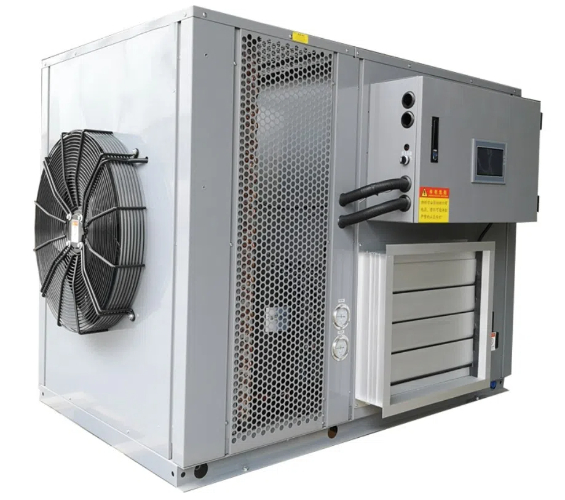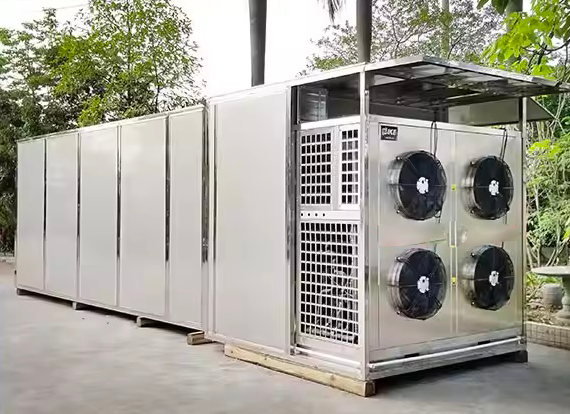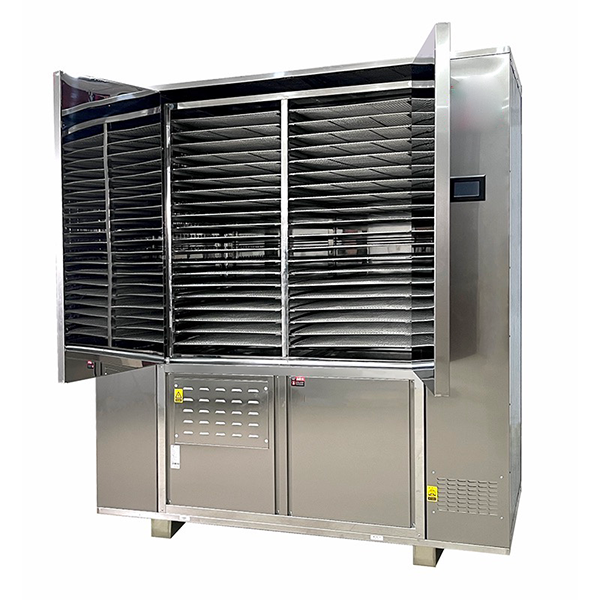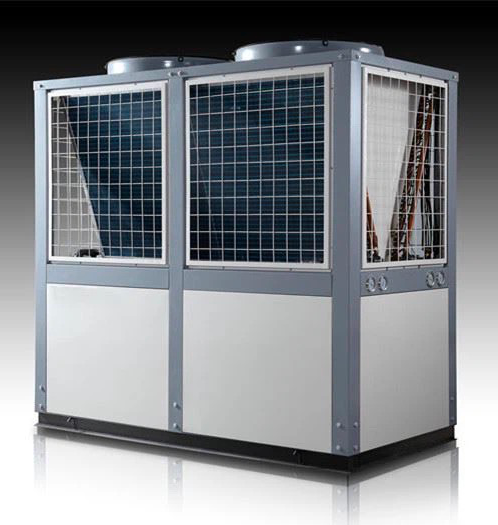
Content Menu
● Understanding Food Dehydration
>> Benefits of Food Dehydration
● Types of Food Dryers
● Heat Pump Dryers Explained
● Heat Pump Condenser Dryers
>> Key Features
● Comparative Analysis: Heat Pump Dryer vs Heat Pump Condenser Dryer
● Choosing the Right Dryer for Food Dehydration
● Applications of Heat Pump Technology in Food Processing
● Advantages of Using Heat Pump Dryers for Food Dehydration
● Limitations of Heat Pump Dryers
● Future Trends in Food Drying Technology
● Conclusion
● FAQ
>> 1. What is the main difference between a heat pump dryer and a heat pump condenser dryer?
>> 2. Are heat pump dryers more energy-efficient?
>> 3. Can I use a heat pump dryer for laundry?
>> 4. How long does it take to dry food using a heat pump dryer?
>> 5. Do I need special maintenance for my heat pump dryer?
Food dehydration is a crucial process in preserving food, enhancing flavors, and extending shelf life. As a manufacturer of food drying machines in China, we provide OEM services to international brands and wholesalers. This article explores the nuances between heat pump dryers and heat pump condenser dryers, emphasizing their applications in food drying.

Understanding Food Dehydration
Food dehydration involves removing moisture from food items to inhibit microbial growth and enzymatic reactions that cause spoilage. The process can be achieved using various methods, including traditional sun drying, oven drying, and modern dehydrators.
Benefits of Food Dehydration
- Preservation: Dehydrated foods can last for months or even years without refrigeration.
- Nutrition: Dehydration retains most of the nutrients found in fresh foods.
- Convenience: Dried foods are lightweight and easy to store, making them ideal for camping or emergency supplies.
- Flavor Enhancement: Concentrating flavors through dehydration can enhance the taste of fruits, vegetables, and meats.
Types of Food Dryers
1. Conventional Dehydrators: These appliances use electric heating elements and fans to circulate hot air around the food.
2. Heat Pump Dryers: These are energy-efficient machines that utilize a heat pump to recycle air within the dryer, reducing energy consumption while maintaining effective drying temperatures.
3. Heat Pump Condenser Dryers: Similar to heat pump dryers but designed specifically to condense moisture from the air without venting it outside.
Heat Pump Dryers Explained
Heat pump dryers operate on a closed-loop system. They use a refrigerant that absorbs moisture from the air inside the dryer. This process occurs in several stages:
- Heating: The air is heated before entering the drum containing wet clothes or food.
- Moisture Absorption: As the warm air circulates, it absorbs moisture from the items being dried.
- Condensation: The moist air is then cooled down, causing the water vapor to condense into liquid water, which is collected in a tank or drained away.
- Recycling Air: The now dry air is reheated and cycled back into the drum, making this method highly efficient.
Heat Pump Condenser Dryers
Heat pump condenser dryers function similarly but are typically used for laundry rather than food. They also recycle air but focus on quickly removing moisture without needing external venting.
Key Features
- Energy Efficiency: Heat pump dryers consume about half the energy of conventional dryers.
- Gentler Drying: They operate at lower temperatures, which is less damaging to delicate fabrics or food items.
- Installation Flexibility: Since they do not require external venting, they can be installed anywhere in a home or commercial kitchen.

Comparative Analysis: Heat Pump Dryer vs Heat Pump Condenser Dryer
| Feature | Heat Pump Dryer | Heat Pump Condenser Dryer |
| Energy Efficiency | High (uses less energy) | Moderate (more energy than heat pump) |
| Drying Temperature | Low (up to 50°C) | Higher (up to 70°C) |
| Moisture Removal | Recycles air | Condenses moisture internally |
| Ideal Use | Food dehydration | Laundry drying |
| Installation | Flexible (no vent needed) | Flexible (no vent needed) |
Choosing the Right Dryer for Food Dehydration
When selecting a dryer for food processing, consider the following:
- Capacity: Ensure that the dryer can handle your volume of food. Commercial models often have larger capacities than home units.
- Temperature Control: Look for models that allow precise temperature settings to avoid cooking food instead of dehydrating it.
- Airflow Design: Good airflow ensures even drying; horizontal airflow designs often perform better than vertical ones.
Applications of Heat Pump Technology in Food Processing
Heat pump technology is increasingly used in commercial food processing due to its efficiency and effectiveness. Some applications include:
- Fruit Drying: Apples, bananas, and berries can be dried efficiently while retaining their flavors and nutrients.
- Vegetable Dehydration: Vegetables like tomatoes and peppers are commonly dehydrated for snacks or meal prep.
- Meat Preservation: Jerky production benefits from controlled temperature and humidity levels provided by heat pump dryers.
Advantages of Using Heat Pump Dryers for Food Dehydration
Utilizing heat pump dryers in food processing offers several advantages:
- Energy Savings: Compared to traditional dehydrators, heat pump dryers use significantly less energy due to their recycling capabilities. This not only lowers operational costs but also reduces environmental impact.
- Consistent Quality: The ability to maintain stable temperatures ensures that food is dried evenly, preventing over-drying or under-drying. This consistency is essential for maintaining quality in commercial applications where product standards must be met.
- Versatility: Heat pump dryers can handle a variety of foods, from fruits and vegetables to meats and herbs. This versatility makes them an excellent choice for businesses looking to diversify their product offerings.
- Reduced Labor Costs: Automated features in modern heat pump dryers minimize manual labor requirements. Operators can set parameters and monitor progress remotely, allowing them to focus on other tasks while the dryer operates efficiently.
Limitations of Heat Pump Dryers
While heat pump dryers offer numerous benefits, they also have some limitations:
- Initial Cost: The upfront investment for heat pump technology can be higher than conventional dehydrators. However, this cost is often offset by long-term savings on energy bills.
- Drying Time: Although they are efficient, heat pump dryers may take longer to dry certain foods compared to traditional methods due to their lower operating temperatures. This may not be suitable for businesses requiring rapid turnaround times.
Future Trends in Food Drying Technology
As technology continues to evolve, several trends are emerging in the field of food drying:
- Smart Technology Integration: Many new models are incorporating IoT (Internet of Things) capabilities that allow users to monitor and control their dryers remotely via smartphone apps. This feature enhances convenience and ensures optimal drying conditions at all times.
- Sustainability Focus: With increasing awareness of environmental issues, manufacturers are designing more sustainable machines that utilize renewable energy sources or incorporate eco-friendly materials in their construction.
- Enhanced Automation: Future models may feature advanced automation technologies that streamline operations further—automatically adjusting drying times based on real-time humidity levels or product characteristics.
Conclusion
In conclusion, both heat pump dryers and heat pump condenser dryers offer unique advantages for food dehydration. While heat pump dryers are more energy-efficient and ideal for preserving delicate foods at lower temperatures, heat pump condenser dryers provide faster drying times at higher temperatures.
Selecting the right type depends on your specific needs—whether you prioritize energy savings or speed of drying. As technology advances, these appliances continue to evolve, offering better performance and efficiency for both home users and commercial operations.

FAQ
1. What is the main difference between a heat pump dryer and a heat pump condenser dryer?
The primary difference lies in their applications; heat pump dryers are designed for food dehydration while heat pump condenser dryers are typically used for laundry drying.
2. Are heat pump dryers more energy-efficient?
Yes, heat pump dryers are generally more energy-efficient than traditional dryers, consuming about half the energy per load compared to conventional options.
3. Can I use a heat pump dryer for laundry?
While it's possible to use a heat pump dryer for laundry, it's specifically designed for food dehydration. For laundry purposes, a heat pump condenser dryer would be more appropriate.
4. How long does it take to dry food using a heat pump dryer?
Drying times vary based on the type of food and thickness but generally range from 6 to 12 hours for most fruits and vegetables.
5. Do I need special maintenance for my heat pump dryer?
Regular cleaning of filters and ensuring proper airflow is essential for maintaining efficiency in both types of dryers. Additionally, check condensation tanks regularly if applicable.












